14 Mar 2014
Can Diet Pills Be Addictive?
Taking diet pills to supplement weight loss can be beneficial for some people, but risky for others. If you are worried about someone you love who is taking diet pills, learn more about them and what to do to help. The Food and Drug Administration (FDA) has approved very few medications for assisting with weight loss. Many over-the-counter remedies are supplements and are not regulated. Understand the dangers and side effects that come with taking these diet aids and confront your loved one if you are worried about her health and wellbeing.
How Do Diet Pills Work?
Different diet supplements work in different ways. Most are supposed to suppress your appetite and supplements that make this claim may include green tea extract, chromium, drugs called catecholamines, or an herb called hoodia. How effective these are is uncertain.
Types Of Diet Pills
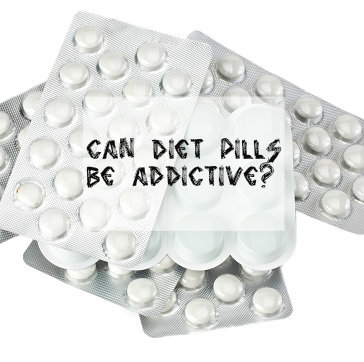 One prescription drug that works as an appetite suppressant is called phentemine.
One prescription drug that works as an appetite suppressant is called phentemine.
Another FDA-approved medication, which is available without a prescription, is called Alli. It aids in weight loss by blocking the body’s absorption of dietary fat. Other supplements claim to be able to block fat, but have not been evaluated by the FDA. They include ingredients like chitosan and guar gum.
The third and most dangerous type of diet drug includes stimulants. Stimulants are drugs that boost your metabolism causing you to burn more calories. Controversial pills, such as those that have ephedra as an ingredient, are often stimulants. Bitter orange is another herb you might see as an ingredient in a stimulant diet pill. Amphetamine, which is a prescription drug used to treat ADHD and narcolepsy, is often abused by people trying to lose weight because it is a powerful stimulant.
Are Diet Pills Addictive?
Most of the ingredients found in diet pills are not chemically addictive. In other words, unlike addictive drugs, they do not cause physiological changes to the brain that can lead to dependence. Stimulant drugs are an exception, especially amphetamine. Anyone abusing amphetamine to lose weight is putting herself at risk for addiction.
While most of the diet pill ingredients are not addictive, there is always the possibility of a psychological dependence on these medications. If someone you love is taking any type of diet pill more often than seems normal and is obsessing over her weight, she may have a type of addiction. She may also have an eating disorder or be on the path to developing one. It is important to intervene before she goes too far and really puts her health at risk.
What Are The Side Effects Of Taking Diet Pills?
There are plenty of potential side effects from all types of diet pills. Some are just uncomfortable, but others are dangerous. The riskiest side effects come from stimulants because they cause an increase in heart rate and blood pressure. When combined with alcohol, stimulants are especially dangerous. Other less serious side effects include headache, diarrhea, nausea, gas, constipation, insomnia and upset stomach.
How Can I Help If I Know Someone Who Is Overusing/Misusing Diet Pills?
If you know someone who is taking risks with diet pills, step in and express your concern. Educate your friend about the dangers of these pills, especially if she is taking stimulants. Encourage her to seek professional therapy so that she can learn how to have a healthy attitude toward her weight and her body. The best way to lose weight is through diet and exercise, so offer to be her partner in making good food choices and in working out.
Read More About Prescription Stimulant Abuse In Moms…And The Dangers
13 Mar 2014
Pregnant And Addicted – What Now?
Battling addiction and striving to achieve sobriety are some of the most difficult challenges a person can face. Addicts have to suffer through terrible withdrawal symptoms while detoxing, go through therapy and rehab and then face a lifelong struggle with the prospect of a relapse. Now imagine facing this demon while pregnant; it is the struggle that too many women encounter. Along with the difficulty of coming clean, they face the shame and embarrassment, the possibility of losing their children and unique health challenges. Getting sober is essential for the health of the mother and the baby.
What Are The Barriers To Treatment For Expecting Mothers?
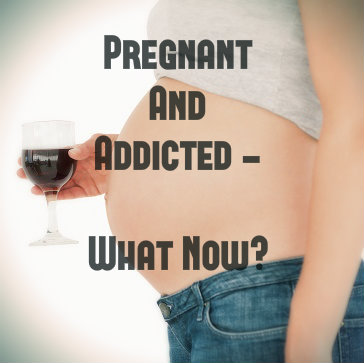 For many women who find themselves both addicted to drugs and unexpectedly pregnant, the idea of getting help is a daunting one. Women in this position tend to feel extreme guilt, shame and fear. A pregnant woman needing addiction treatment may avoid getting help for fear of being judged and vilified. She may also face the fear of losing her newborn after admitting to being an addict.
For many women who find themselves both addicted to drugs and unexpectedly pregnant, the idea of getting help is a daunting one. Women in this position tend to feel extreme guilt, shame and fear. A pregnant woman needing addiction treatment may avoid getting help for fear of being judged and vilified. She may also face the fear of losing her newborn after admitting to being an addict.
What addicted pregnant women need is compassionate care from doctors and other health professionals who understand the special needs of these patients. Without care, these women and their children will suffer. For instance, some women may try to take the matter into their own hands and quit cold turkey, which can actually be harmful to the baby.
The Consequences Of Addiction On The Fetus
For the unborn child, the consequences of a mother’s addiction can be serious. The baby will most likely be born with neonatal abstinence syndrome. This is a collection of symptoms caused by the drugs the mother uses. The baby is born addicted and then experiences withdrawal. Symptoms may include blotchy skin, poor feeding habits, irritability, diarrhea, high-pitched crying, seizures, insomnia, slow weight gain, fever, sweating, trembling and vomiting. Withdrawal in the baby is not the only concern; drug use can lead to complications during labor and delivery.
Pregnant Addicts On The Rise – Finding Solutions
As the number of people in the U.S. addicted to opioids (prescription painkillers and heroin) rises, the number of mothers and infants affected also rises. Statistics indicate that the number of babies born with neonatal abstinence syndrome has more than doubled in the last six years. In 2012, nearly 6 percent of pregnant women were using illegal drugs. The increases are being seen across the country and among all demographic groups. The healthcare costs are rising with the number of addicted babies.
Healthcare professionals are stepping up and looking for solutions to treating these women and their babies. With compassion and tested methods for treatment, they can help women feel comfortable asking for help with addiction. More hospitals and addiction centers are offering specialized care for pregnant women as the problem grows. Although many experts in the past have considered use of maintenance drugs, like methadone, to be bad for the unborn child, doctors now know that maintenance is often the best option. Withdrawal in the pregnant mother can be very dangerous for the baby.
Many of these new programs include not just cutting-edge treatment for addiction in the mother, but also the goal of continuing that care after the baby is born to ensure the mother has the best chance of staying sober and caring for her children. The programs also include plans for reducing complications during delivery and maximizing the odds of having a healthy baby. Many plans also help these new mothers with family planning and parenting skills, as well as long-term care for themselves and their children. With good care that is specialized for their needs, pregnant women have hope for a successful birth and healthy child.
Read More About Drinking During Pregnancy And Find Out Why Women Continue To Drink
Being an addict takes a serious toll on your body. The longer you gave in to your cravings for drugs or alcohol, or both, the more damage you have done. The good news is that once you are in recovery, you can begin to reverse that damage and restore your health to a significant degree. To make the most of your recovery, to feel better and to avoid relapsing, turn to a healthful diet and lifestyle.
How Does Substance Abuse Impact Health?
How your addiction has affected your body depends on the drugs that you abused. In general, however, substance abuse impacts your health in two ways: the drug itself causes harm and your lifestyle likely causes you to neglect nutrition.
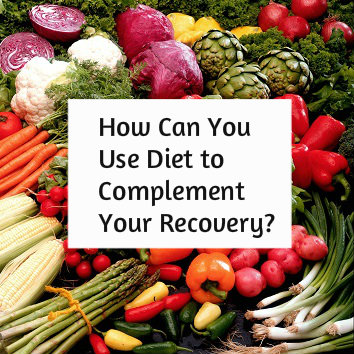 Opiates can cause a lot of gastrointestinal symptoms like constipation, nausea, and vomiting. Alcohol causes deficiencies in certain vitamins, which can lead to anemia and damage to your nervous system. Alcohol can also cause high blood pressure, diabetes, and liver damage. Meth, cocaine, and crack all cause weight loss and malnutrition. They also cause dehydration, insomnia, and memory problems. Marijuana use can cause you to overeat, and as a result, to gain excess weight.
Opiates can cause a lot of gastrointestinal symptoms like constipation, nausea, and vomiting. Alcohol causes deficiencies in certain vitamins, which can lead to anemia and damage to your nervous system. Alcohol can also cause high blood pressure, diabetes, and liver damage. Meth, cocaine, and crack all cause weight loss and malnutrition. They also cause dehydration, insomnia, and memory problems. Marijuana use can cause you to overeat, and as a result, to gain excess weight.
How Can Diet Aide In Recovery?
When you first detox or start to get help for your addiction, diet and nutrition may be the furthest things from your mind. Your main goal is to stop using. Once you feel more secure in your recover, however, it’s time to think about repairing your body. When you feel better because of good nutrition, you will be less likely to relapse. There are a few general guidelines for the most important components of a complete and healthful diet:
- Limit fat intake – A high-diet is unhealthy and can lead to weight gain. Stick to healthy fats, such as those that come from plant sources. Olive oil, avocados, and coconut are all good sources to include as well as limited amounts of animal fats.
- Get plenty of protein – Protein is essential for energy and for building muscle. It is essential to get enough protein in your diet to start repairing some of the damage caused by drugs and alcohol. Include lean protein in your daily diet (e.g., fish, poultry, eggs, nuts and beans).
- Consume whole grains -Whole grains are an important energy source and are much better for you than refined grains. They provide lasting energy, a lot of fiber, and vitamins and minerals. Look for whole grain breads and pastas as well as oatmeal and brown rice.
- Include fruits and vegetables – Produce is an important source of nutrients. Eat a variety of fresh vegetables and fruits. Where fresh produce is limited or too expensive, go with frozen over canned.
- Consider vitamin supplements – Addicts are often deficient in B vitamins in particular, so consider getting a high-quality B complex supplement to take each day.
What To Eliminate From Your Diet While In Recovery
In addition to including healthful foods in your diet, it is important to eliminate certain things. Avoid sugar, as it can cause cravings and can become a substitute addiction. Natural sugar from fruits will be enough to meet your nutritional needs. Also avoid caffeine for similar reasons. Stay away from processed foods as much as possible; they can place extra stress on your liver. Keep your diet as full of natural, whole foods as possible for maximum benefit.
Remember as you work through your recovery that the greater your overall health, the greater your odds of avoiding relapse. A healthful diet will help you to feel better and will motivate you to keep making positive changes in your life. If you are unsure of how to best improve your diet, see your doctor for guidance or a referral to a professional nutritionist.
Read More About Diet And Exercise Aiding In Recovery
Police officers are often the first medical responders on the scene of drug-related overdose emergencies. A new study published online in the journal Drug and Alcohol Dependence shows that the preparedness of police officers when responding to an overdose could affect the outcomes for the individual as well as the community.
The study focused on areas of Rhode Island and Connecticut that have been experiencing growing numbers of prescription opioid overdose emergencies. Many of these were relatively sparsely populated suburban and rural areas, where emergency medical technicians (EMTs) and paramedics are a more limited resource. In these areas, police officers are more likely to be first medical responders than in areas with more hospitals and associated emergency medical personnel.
Traci C. Green, Ph.D., a research scientist at the department of emergency medicine for Rhode Island Hospital, was the lead investigator for the new study. Green and her fellow researchers conducted interviews with law enforcement officers. The interviews included questions about personal attitudes toward drug users and victims of overdoses, as well as questions about the resources and protocol for police officers who are the first responders to the scene of an overdose.
Study Finds Frustration And Confusion Among Law Enforcement
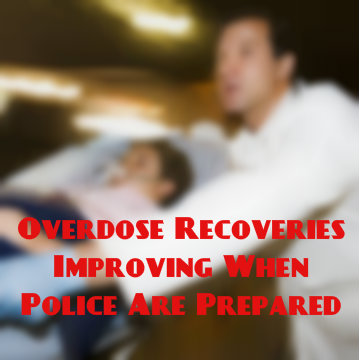 They discovered a range of personal attitudes among police officers toward drug users, as well as confusion about what treatment police officers are expected and authorized to perform at the scene of drug-related emergencies. Many police officers are equipped only with basic first aid and CPR training, and can do little to save the life of an overdose victim in critical condition.
They discovered a range of personal attitudes among police officers toward drug users, as well as confusion about what treatment police officers are expected and authorized to perform at the scene of drug-related emergencies. Many police officers are equipped only with basic first aid and CPR training, and can do little to save the life of an overdose victim in critical condition.
Some police officers revealed negative attitudes about people who use drugs, particularly repeat offenders. Others were empathetic toward those suffering from drug addiction but also expressed frustration with the lack of comprehensive treatment and other resources for drug addicts. Quite a few believed that the cycle of addiction had a significant negative impact on the individuals in their community as well as on the community as a whole. Many police officers in the study also revealed frustration about the limited training and resources they themselves have when responding to an overdose scene.
Frustration with the growing problem of prescription drug abuse and overdose is understandable. In 2010, more than 8.76 million people reported abusing prescription medicine, and in 2008, there were more than 36,000 deaths from drug overdoses, most of those caused by prescription drugs. In fact, prescription painkillers in the form of opioids are responsible for three quarters of all overdoses from prescription medications. Cocaine and heroin combined resulted in fewer overdose deaths than prescription opioids.
Giving Police Officers Tools And Training For Overdose
In some communities around the country, police officers and other responders are given Naloxone, which is the standard drug overdose antidote used by paramedics. Naloxone helps to reverse the effects of prescription opioids and to restore breathing for people in respiratory arrest. The current White House Office of National Drug Control Policy supports training more responders in the use of this tool and making it available to those in a position to be first medical responders.
The responses in the Rhode Island Hospital study suggest that police officers will be more effective in the role of first responders with increased training and improved understanding of their responsibilities. In more rural areas, police officers may be the only trained medical responders who are able to get to overdose victims during the critical window when Naloxone or other treatment methods are most likely to be effective.
Further empowering police officers to be more effective responders may also help to improve the relationship between law enforcement and the community in many areas. It may relieve some feelings of frustration and helplessness on the part of police officers by allowing them to have a more active role in saving lives. It may also improve community views on law enforcement when officers at the scene are able to administer life-saving aid. Some of the police officers interviewed during this study felt that the ability to administer Naloxone could be a critical element in positive police-community relations.
Read More About ER Visits Rising Due To Drug Use
Seniors make up 13 percent of the population of the United States, yet they account for more than one-third of the prescription medications. One-half of all seniors were taking at least three prescription medications as of the year 2000, up from one-third in 1988.
With so many seniors taking prescription drugs, it shouldn’t be surprising that they are a part of the rising problem of prescription drug abuse. Nevertheless, senior drug abuse remains a largely hidden problem, in large part because elderly people do not fit the common profile of someone dealing with drug abuse or addiction.
In the coming decades, this problem can only be expected to grow. Seniors are one of the fastest growing segments of the population, as the first wave of the baby boom generation has reached senior citizen status. By 2030, seniors are expected to make up one-third of the country’s population.
What Are The Hidden Symptoms Of Senior Addiction?
 Identifying the signs and symptoms of drug problems in seniors presents various challenges. One of the biggest difficulties is the fact that a number of these signs and symptoms can mirror normal signs of aging.
Identifying the signs and symptoms of drug problems in seniors presents various challenges. One of the biggest difficulties is the fact that a number of these signs and symptoms can mirror normal signs of aging.
Among the symptoms of drug use that may be mistaken for signs of aging are disorientation, poor balance, memory loss, chronic boredom, depression, shaky hands, poor balance and mood swings. Since seniors do not fit the stereotypical profile of someone with drug problems, recognizing when such symptoms spring from drug use and not just aging is a challenge for loved ones and health professionals alike.
Drug Abuse Vs. Misuse – Is There A Difference?
When examining drug problems among seniors, it is helpful to make the distinction between drug abuse and drug misuse. Drug misuse refers to the use of prescription medications in a way that does not comply with the prescription instructions. Drug misuse can be entirely unintentional, and the result of unclear instructions or confusion. Drug misuse can also be intentional; for example, patients may take more than the prescribed dose without consulting their doctor if they feel that the prescribed dose is not having an effect. In general, the term misuse is used to refer to the incorrect use of legitimately prescribed drugs, with the intent of treating an established medical problem.
In contrast, drug abuse refers to people who use drugs for recreational purposes. They may abuse illegal drugs that have no therapeutic purpose, or they may use therapeutic drugs incorrectly in order to achieve a euphoric high or some other pleasurable feeling.
Both drug misuse and drug abuse can result in drug dependence and other negative side effects. However, drug misuse is usually the easier problem to solve. The most common reason for drug misuse is an ineffective treatment plan, and the problem will usually disappear if treatment is revisited and a more effective plan put in place.
Drug abuse among seniors is much less common than drug misuse. Nevertheless, the problem does exist for 12 to 15 percent of elderly people who seek medical help.
What Are The Commonly Abused Drugs Among The Elderly
Opioid drugs, depressants, stimulants, benzodiazepines and over-the-counter (OTC) medications are the drugs most frequently abused among seniors. Opioids are typically prescribed for pain relief; depressants are prescribed for anxiety and sleep disorders; stimulants are prescribed for narcolepsy and ADHD; and benzodiazepines for anxiety and insomnia.
Opioids are particularly dangerous drugs to abuse or misuse because they are extremely addictive. These medications are chemically similar to the illegal drug heroin, and can be just as addictive as heroin when used incorrectly.
After prescription drugs, alcohol is the most commonly abused substance among the older adult population. OTC medications can react poorly with alcohol, leading to negative consequences that would not otherwise be present with these medications. They can also react badly with prescription drugs.
Find Out The Strategies To Address Senior Drug Problems
Tailoring education, consumer information and screening efforts to older adults are some key steps to reducing drug abuse among the elderly.
Although seniors are the most significant consumers of prescription drugs, promotional and educational materials are often not geared toward them. Helpful tools might include educational materials available in large print and drug diaries to help track medications.
Educational efforts aimed at reducing drug abuse should also keep seniors in mind. Teenagers aren’t the only segment of the population that needs education about drug and alcohol abuse. The more society recognizes that seniors are an at-risk population, the more education and screening efforts may be available in retirement communities, senior centers, city parks and recreation departments, and other places where the elderly can benefit.
Read More About Why Drug Use Is Surging In Baby Boomers
Establishing a healthy romantic relationship is not always easy, but dating a former drug addict or alcoholic can present its own unique challenges. If you have met someone and you feel a connection you would like to explore, but have just found out he is in recovery, you may be wondering if you should go forward. If you do continue the relationship, you may wonder how it will work and what you may be in for. Finding out that someone you like is a recovering addict does not need to be a roadblock, but you should be prepared to meet the challenge.
Do Recovering Addicts Need Extra Support?
 Yes, a recovering addict does need support, more than you might expect. To fully understand what this person is going through, and has been through, you should read up on addiction. You should know that addiction is a chronic and lifelong illness. Even if he has been sober for years, he is still in recovery and he still feels the temptation to use again. This means that he needs support from the loved ones in his life. Support and sensitivity from you and from others is what keeps him strong and sober.
Yes, a recovering addict does need support, more than you might expect. To fully understand what this person is going through, and has been through, you should read up on addiction. You should know that addiction is a chronic and lifelong illness. Even if he has been sober for years, he is still in recovery and he still feels the temptation to use again. This means that he needs support from the loved ones in his life. Support and sensitivity from you and from others is what keeps him strong and sober.
Can I Drink Around A Recovering Addict?
A relationship with a recovering addict carries with it some unique characteristics. You may not be able to drink around him, or even engage in other activities like going to parties where drinking or drug use is present. Whether or not you can drink in front of him depends on his individual needs, but it is something you need to consider. You need to be sensitive to his weaknesses and how your actions impact him.
Will A Recovering Addict Relapse?
As you learn more about addiction, you will learn that like other chronic illnesses it comes with the likelihood of relapse. Roughly half of all addicts in recovery will relapse at least once and use again. If you are considering dating a recovering addict, this is something to consider. Will you be able to cope if he does relapse? How will you be prepared to handle the situation? If you are completely unfamiliar with addiction and have no experience with addicts, you may want to attend a few support group meetings or see a drug counselor to learn what to expect and how to help during a relapse.
Can I Trust A Recovering Addict?
One of the biggest issues in relationships with addicts, romantic or otherwise, is trust. Loved ones who have stood by an addict have experienced great breaches of their trust. Whether you will be able to trust an addict in recovery is up to you. Some people will feel they can never trust a former addict, while others may be able to suspend their doubts. The decision is personal and entirely yours to make.
Dating someone in recovery is different from dating someone who has never been an addict. There are downsides and challenges, but there are also some unexpected bonuses. Addicts who have been through therapy and treatment may have a better understanding of how to relate to others, how to communicate and how to develop and maintain healthy relationships. While you may question your ability to trust and worry about relapses, you may just find yourself dating someone who can bring much more to the table. He may be more sensitive, communicative and aware of your needs than anyone else you have dated.
Read More About If You Are Enabling The Addict In Your Life?
06 Mar 2014
What Is The Deadly New Designer Drug: “Smiles”?
Smiles is the street name for 2C-I, a potent synthetic hallucinogen that has psychedelic-like effects when ingested. Smiles belongs to the 2C family of compounds which includes another popular synthetic, 2C-B. This class of drugs is closely related to amphetamines, including methamphetamine. Smiles is often sold as a fine white powder or tablet, and is also mixed into candies. It can be snorted, smoked or eaten.
History And Distribution Of 2C-I
2C-I was first synthesized in the 1990s by chemist Alexander Shulgin, who is well known for synthesizing many other popular drugs. Smiles appeared as early as the early 2000’s in the Netherlands as a then-legal alternative to 2C-B, which had just been banned. Smiles was banned shortly after, in 2008, along with other 2C drugs.
The U.S. classified 2C-I as a Schedule I substance (meaning “no accepted medical value” and “high potential for abuse”) in 2012, making it illegal to make, distribute or possess.
The Dangerous Effects Of 2C-I
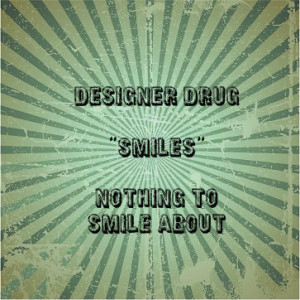 Some compare 2C-I’s effects to a very potent dose of LSD (acid) or MDMA (Molly) because of hallucinations and a feeling of euphoria. This drug, however, appears to be much more dangerous. Side effects include the following:
Some compare 2C-I’s effects to a very potent dose of LSD (acid) or MDMA (Molly) because of hallucinations and a feeling of euphoria. This drug, however, appears to be much more dangerous. Side effects include the following:
- Nausea and vomiting
- Muscle spasms
- Paranoia
- Seizures
- Raised blood pressure
- Kidney failure
What Are The Dangers Of 2C-I?
Unlike the more common hallucinogens, such as LSD and psilocybin (magic mushrooms), which typically do not cause overdoses, 2C-I may cause severe bodily harm, even at small doses. The white powder form of 2C-I is impossible to tell apart from other substances, and it can easily pass off as LSD when mixed into candy or blotting paper, putting casual LSD users at risk of experiencing 2C-I’s more severe side effects, or worse, an overdose. In addition, 2C-I can be difficult to detect by emergency room doctors, with many toxicology tests coming back negative. This could be due, in part, to smiles being laced with other compounds. Like heroin and other synthetics, smiles is notoriously impure. There is currently no established lethal dose of 2C-I, but the drug has been implicated in a number of deaths, both in the U.S. and Europe.
“Smiles” Overdose Tragedies
According to local news reports, in the summer of 2012, 17-year-old Elijah Stai of Park Rapids, Minn., ingested a fatal dose of smiles in a candy bar given to him by a friend. Only an hour later, while hanging out at the local McDonald’s, Stai’s smiles trip took a turn for the worse. His distraught friends and other eyewitnesses describe him acting “possessed”: hyperventilating, making strange sounds and repeatedly hitting his head against the floor. His worried friends took him back home in an attempt to let him calm down and “ride out” the high, but the day ended in tragedy. Less than two hours later, Stai stopped breathing. His story was sadly mirrored by another death in a nearby city just the day before when police found the body of a teen on a sidewalk; he had also suffered a fatal smiles overdose. Police blamed both incidents on a “bad batch” of 2C-I that was circulating on the streets at the time.
The story of the teens serves as a somber reminder of how dangerous synthetic drugs can be. Even if most 2C-I “trips” end without any tragic consequences, there’s no telling how safe the next dose will be, or if it’s even pure 2C-I. Experts are urging extreme caution around these drugs and warn that teens are especially likely to experiment with them.
Read More About The Dangers Of Designer Drugs
05 Mar 2014
FDA Announces Plans To Limit Acetaminophen Use
The Food and Drug Administration (FDA) has asked healthcare professionals to stop prescribing high doses of the painkiller acetaminophen, which is used in Tylenol, Vicodin and Percocet.
The FDA hopes to reduce liver damage in patients taking high doses. Because many drugs contain acetaminophen, the chances of an inadvertent overdose for someone taking several different prescriptions are likely and very dangerous. Acetaminophen overdose is the leading cause of acute liver failure.
How Drug Makers And Pharmacists Will Be Affected
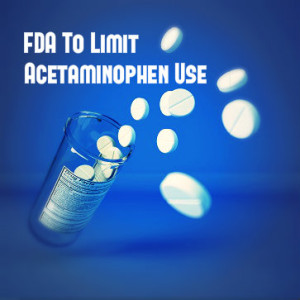 Drug makers are also being asked to consider limiting the amount of acetaminophen in prescription drugs to 325 milligrams or less per pill. Over half of drug makers have agreed. Another step the FDA has taken is recommending pharmacists who receive multiple prescriptions from doctors that, when combined, contain more than 325mg of acetaminophen per dose, contact the doctor who prescribed it and discuss other options.
Drug makers are also being asked to consider limiting the amount of acetaminophen in prescription drugs to 325 milligrams or less per pill. Over half of drug makers have agreed. Another step the FDA has taken is recommending pharmacists who receive multiple prescriptions from doctors that, when combined, contain more than 325mg of acetaminophen per dose, contact the doctor who prescribed it and discuss other options.
Are Over The Counter Drugs Included In FDA’s Limit Of Acetaminophen?
The FDA is also attempting to make drug makers take any drugs containing more than 325 mg of acetaminophen off the market. The warning issued by the FDA does not apply to Tylenol and other over the counter drugs… for now.
Acetaminophen And Alcohol – Dangerous Combination
The FDA explained there is no available data to show that more than 325 mg of acetaminophen provides additional benefits, but it does increase the risk of liver problems. When combined with alcohol, the effects of acetaminophen are even more dangerous. They also report that acetaminophen has been known to cause life-threatening skin reactions, including blisters, serious rashes and the detachment of the upper surface of the skin.
Preventing Acetaminophen Overdose
To decrease chances of overdose, individuals taking pain medications and other medications should read the labels of their prescriptions. The FDA maximum recommendation for adults is no more than 4,000 mg of acetaminophen a day.
Read More On The FDA Urges Public To Beware Of Phony Adderall Sold On The Internet


